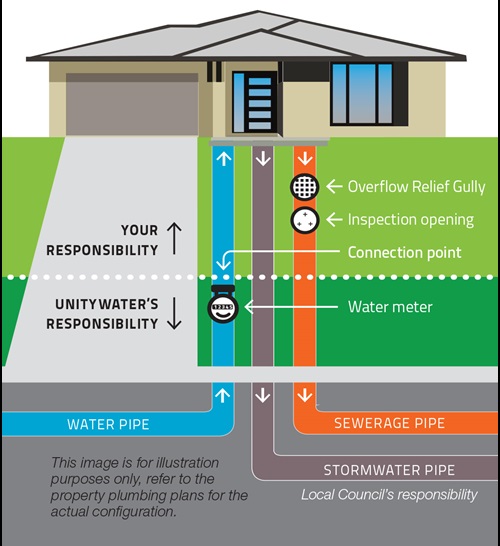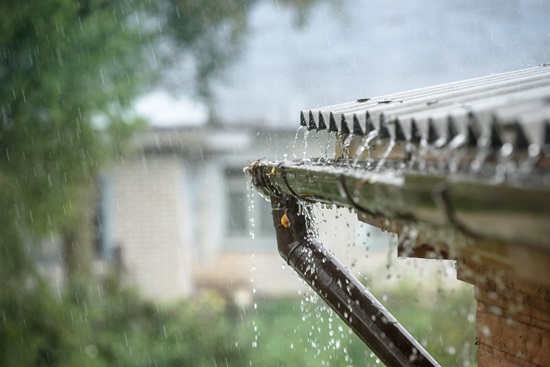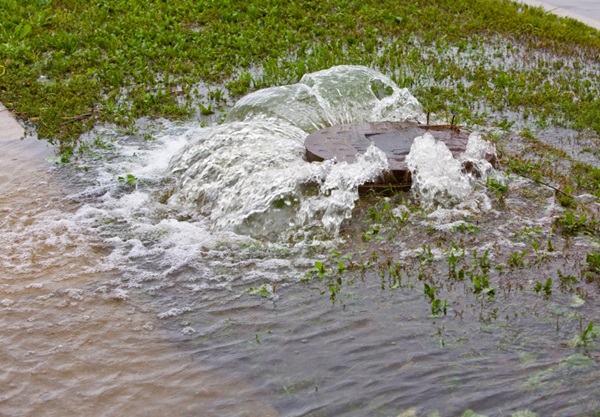Overflows during wet weather events
When it rains you will see a lot of water around your property and streets, which is all the rain entering the storm water network. During a large wet weather event when there is a lot more rain, some of this rainfall can make its way into our wastewater network.
Our wastewater network is designed to take minor additional flows during wet weather, however in some wet weather events this allowance can be exceeded and lead to overflows from our wastewater network. This problem can be exacerbated if the rainfall is heavy enough to overwhelm the stormwater network, as more may spill over into the wastewater network.
What you will see
You may see wastewater overflowing at designated overflow points along the network, in some cases they occur at maintenance holes or on private property. These wet weather overflows are highly diluted as they are mostly rainwater.
If you see a sewage overflow
- Avoid all contact with sewage water and keep clear of contaminated items
- Stop using your toilet(s) or flushing water
- Turn off any taps
- Check your ORG (Overflow Relief Gully) is not blocked or obstructed
- Please call 1300 086 489
- We will attend to assist with clean-up of external areas as soon as it is safe to do so.
Overflows in your street
You may come across overflows in your street, these can especially occur during wet weather. These overflows will be highly diluted, but please stay clear and call us on 1300 086 489.
We get a lot of calls during wet weather events and our response times may vary but our crews will attend once it is safe to do so, and they will:
- contain the spill, clean and disinfect affected areas
- barricade affected areas if wastewater spills are ongoing
- where overflows occur in a public area or waterway, we will assign specialist environment staff to conduct sampling and monitoring and erect signage to advise the public of the overflow.
Always stay out of flood-affected waters during and after a storm, as they can be fast-moving and may contain snags, sharp objects, stormwater-diluted sewage, chemical waste, fallen powerlines and wildlife.
What you can do to help on your property
You can help stop sewage overflows by checking your downpipe connections and Overflow Relief Gully, and making sure that stormwater is able to run off away from your property without being channelled into the sewer.
Sewerage and stormwater are two entirely separate systems
They are designed to keep stormwater out of the sewage system and vice versa. However, during persistent heavy rain or a flood event, large volumes of stormwater can get into the sewerage system and cause sewage to discharge through maintenance holes and other overflow points.
In many cases the problem is incorrect drainage connections such as downpipes running into the sewer or Overflow Relief Gullies positioned too low.
We strongly advise all people to stay out of flood-affected waters during and after a storm, as the water may contain snags, sharp objects, stormwater-diluted sewage, chemical waste, fallen powerlines and wildlife.
Wet weather overflow FAQs
During wet weather, rainfall can make its way into the wastewater network through ORGs (Overflow Relief Gullies), joints in pipes and maintenance holes, and through incorrectly plumbed stormwater drainage.
This problem can be exacerbated if the rainfall is heavy enough to overwhelm the stormwater network, as more may spill over into the wastewater network.
Rainwater and groundwater enter the wastewater network in two ways:
- Inflow – when rainwater enters the sewerage network via defective or non-compliant plumbing.
- Infiltration – when groundwater enters underground infrastructure via cracks and faulty joints.
We inspect wastewater infrastructure in areas where overflows have been experienced, as part of our sewer network testing program.
We notify property owners of any incorrect plumbing connections identified on their property and advise how these can be rectified.
Our crews will also work to identify and rectify any leaks and cracks in underground infrastructure.
- Check your downpipe is connected to the stormwater system, not the wastewater network.
- Check your Overflow Relief Gully is not covered or blocked and the grate is loosely fitted.
The wastewater network and stormwater network are two separate systems, designed to meet different needs.
Unitywater manages and maintains the wastewater network, which contains and transports wastewater from homes and businesses to a treatment plant, where it is treated and either reused or released safely back to the environment.
Councils manage and maintain the stormwater network, which directs rainwater run-off from rooftops, roads, pavements, and other natural and urban areas to the nearest waterway.
Sewer overflow FAQs
We advise that you do not touch anything. It is a health and safety risk to you and your family.
We will dispatch a field crew promptly to investigate and begin repairs to our services where possible. It is important to call your insurance company immediately. They can provide advice and practical assistance on the clean-up.
If you are a tenant, call your property manager or landlord immediately.
Unitywater does not assist with internal cleaning. This is best completed by a professional cleaning agency nominated either by you or your insurance company. Any costs associated with damage to your property including repairs, cleaning and replacement costs, should be referred to your insurance company.
You can help protect yourself and your family after an overflow with some simple actions:
- Avoid contact with sewage or dirty water.
- If you have any medical concerns about skin contact or ingestion of dirty water or sewage, please contact your doctor. Wash your hands frequently, especially if you have been in contact with sewage, dirty water or contaminated items, and before eating.
- Keep children and pets away from areas affected by sewage or dirty water until cleaning is completed.
- Do not eat or drink any food exposed to sewage or dirty water and do not use any utensils exposed to sewage.
- Keep contaminated items, water and/or hands away from your mouth, eyes and nose.
- Disinfect all areas and equipment that have been in contact with sewage or dirty water using an appropriate disinfectant applied in accordance with its usage instructions.
- Sunlight is a powerful disinfectant and can typically kill bacteria within 48hrs, so keep windows and curtains/blinds open to let as much natural light in as possible.
- Tenants should contact their property manager or landlord immediately to advise them of the incident.
As a property owner, you are responsible for all plumbing, including the pipes, fixtures and fittings, from the water meter, irrespective of whether the meter is located within or outside your property boundary.
Unitywater owns and is responsible for the infrastructure up to and including the water meter. In some instances, the water meter may be located within your property boundary, however, it is still the responsibility of Unitywater.
Council owns and is responsible for the stormwater pipes (the pipes that take away rain-water) outside your property. They are also responsible for private plumbing and drainage compliance.

Handy links


